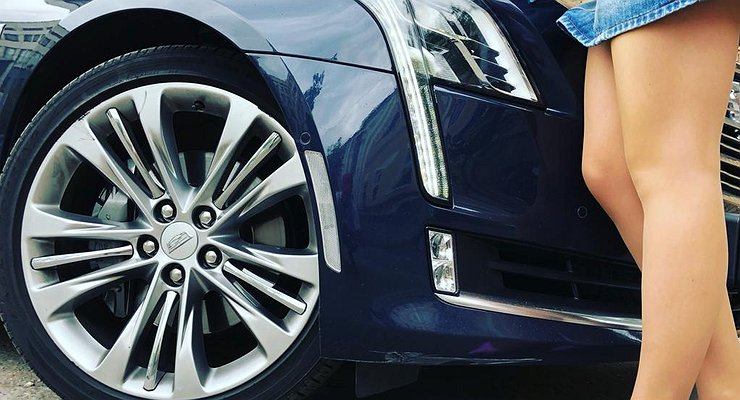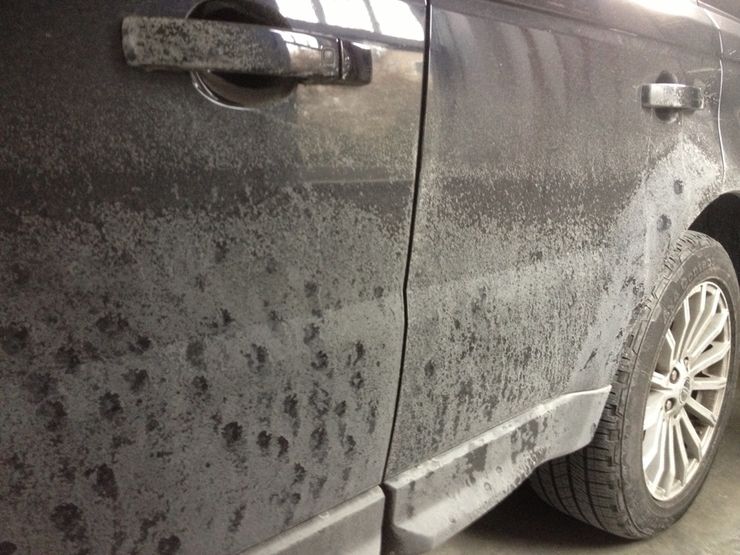Why in summer the body is covered with a layer that cannot be washed off even with a “self-wash”
- August 2, 2022
- 0
A clean car is not only a neat appearance, but also the health of the paintwork of its body. But even in dry weather, a huge amount of
A clean car is not only a neat appearance, but also the health of the paintwork of its body. But even in dry weather, a huge amount of

Keeping the bodywork clean is a must. Sloppy drivers run the risk of getting paint problems beforehand. Others love to take care of their iron horse. However, how often it is not mine, even in dry weather it is immediately covered with a layer of dust, it is worth driving another dozen other kilometers. And even if the car is light and there is not a layer of microscopic dirt on it, a summer rain shower will show it in an instant,
spoil the appearance of the vehicle, and as a result, the mood of the owner. Leaving dirt on the body, the driver risks aggravating the problem – the layer of dirt will be quite difficult to wash without special equipment. But how can this be avoided?
The air is full of dust. Therefore, it is naive to think that you will drive clean for a long time after washing your car. Tiny particles of dirt, pollen, dust from worn rubber, asphalt and sand scouring under the wheels surround us everywhere. And of course, under the influence of static electricity, they deposit on the bodies of our cars. In addition, if you are in a dusty car under a linden, maple or poplar, resin and nectar, which trees and plants secrete, are added to the dust and pollen. After letting this mixture dry, it will be difficult to wash it yourself, even with a “self-wash”. But is there a chance to minimize the build-up of dust on the car body?
Yes, there are ways to minimize the build-up of fine dirt on the car body. Static dust is quite difficult to wash off the car’s paint. And even if you come to the most powerful “self-wash”, then at the end of the water procedures, dirty spots will be noticeable on the body. Unless, of course, you forgot to cover the entire surface with a large-pored sponge. Such a simple action helps to remove static dust, which was previously not washed away in the sink, even under strong pressure.
But even such a wash does not give lasting results. Dirt will settle back on the body as soon as you start moving. It is therefore recommended to apply wax or liquid glass to the paint after washing. Thanks to a thin layer of these compounds, static tension is reduced and dust settles less on the metal. But wiping the car with a dry cloth or brush in the hope that the dust layer can come off is absolutely not worth it.
First, stains become visible and all the dust collects in countless cobwebs. Second, you can scratch the paint with larger particles adhering to the body. Thirdly, a rag and a brush also create a static charge, the task of which is to get rid of it. And this is best addressed by automotive chemistry, which not only prevents the build-up of static electricity, but also has a water-repellent effect, making dirt and its small particles less likely to stick to the car body after rain.

Keeping the bodywork clean is a must. Sloppy drivers run the risk of getting paint problems beforehand. Others love to take care of their iron horse. However, how often it is not mine, even in dry weather it is immediately covered with a layer of dust, it is worth driving another dozen other kilometers. And even if the car is light and there is not a layer of microscopic dirt on it, a summer rain shower will show it in an instant,
spoil the appearance of the vehicle, and as a result, the mood of the owner. Leaving dirt on the body, the driver risks aggravating the problem – the layer of dirt will be quite difficult to wash without special equipment. But how can this be avoided?
The air is full of dust. It is therefore naive to think that you will drive clean for a long time after washing your car. Tiny particles of dirt, pollen, dust from worn rubber, asphalt and sand scouring under the wheels surround us everywhere. And of course, under the influence of static electricity, they deposit on the bodies of our cars. In addition, if you are in a dusty car under a linden, maple or poplar, resin and nectar, which trees and plants secrete, are added to the dust and pollen. After letting this mixture dry, it will be difficult to wash it yourself, even with a “self-wash”. But is there a chance to minimize the build-up of dust on the car body?
Yes, there are ways to minimize the build-up of fine dirt on the car body. Static dust is quite difficult to wash off the car’s paint. And even if you come to the most powerful “self-wash”, then at the end of the water procedures, dirty spots will be noticeable on the body. Unless, of course, you forgot to cover the entire surface with a large-pored sponge. Such a simple action helps to remove static dust, which was previously not washed away in the sink, even under strong pressure.
But even such a wash does not give lasting results. Dirt will settle back on the body as soon as you start moving. It is therefore recommended to apply wax or liquid glass to the paint after washing. Thanks to a thin layer of these compounds, static tension is reduced and dust settles less on the metal. But wiping the car with a dry cloth or brush in the hope that the dust layer can come off is absolutely not worth it.
First, stains become visible and all the dust collects in countless cobwebs. Second, you can scratch the paint with larger particles adhering to the body. Thirdly, a rag and a brush also create a static charge, the task of which is to get rid of it. And this is best addressed by automotive chemistry, which not only prevents the build-up of static electricity, but also has a water-repellent effect, making dirt and its small particles less likely to stick to the car body after rain.
Source: Avto Vzglyad
I’m Sandra Torres, a passionate journalist and content creator. My specialty lies in covering the latest gadgets, trends and tech news for Div Bracket. With over 5 years of experience as a professional writer, I have built up an impressive portfolio of published works that showcase my expertise in this field.